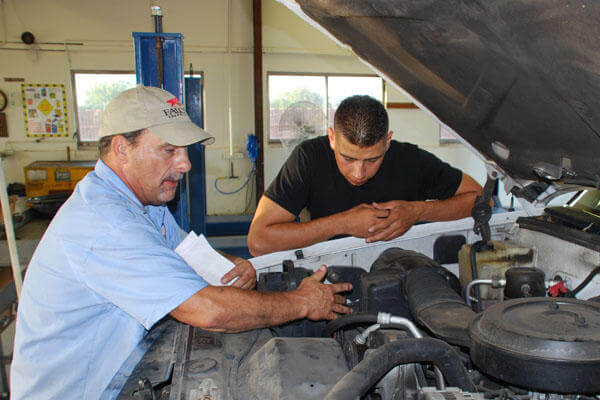The Heater Core
The heater core is located inside the vehicle between the instrument panel and the firewall. It looks like a miniature radiator minus the fill neck and cap. The purpose of the heater core is to provide heat for the passenger compartment. The same liquid that the water pump circulates throughout the engine also circulates through the heater core when the engine is operating. When you get chilly, you can direct air across the heater core and heat the interior of your vehicle by turning on the inside fan. Because the heater core is relatively passive, it usually doesn't need attention unless it breaks.
The Transmission Cooler
Vehicles with automatic transmissions have a transmission cooler located in or near the bottom or side of the radiator (refer to Figure 11-1). The transmission fluid circulates from the hot transmission to the cooler, which cools it and returns it to the transmission. If the transmission cooler on your vehicle is working properly, you don't need to monkey with it. If it leaks, have it repaired by a professional.
Air Conditioning
Air conditioning is now standard equipment on most vehicles rather than an option. It uses refrigerant to remove the heat from the air (rather than cooling it) and a blower to send the cool air into the passenger compartment.
Eco-Logic: Until 1992, a refrigerant called CFC-12 (commonly called Freon) was standard on most vehicles. When it was found to contribute to the depletion of the ozone layer, CFC-12 was phased out and replaced by R-134a. Production of CFC-12 ceased at the end of 1995, and although the stuff can be recycled, supplies may be limited. The biggest improvements since the development of R-134a are better, less-porous hoses and seals so that the smaller R-134a molecules don't leak out like they used to. A new CO2 refrigerant system that has been in the prototype stage since around 2002 may be the next major development in vehicle air conditioning systems.
Caution: If your vehicle was built before 1992, you may have trouble getting Freon if you need to replace the refrigerant in your vehicle's air conditioner. Conversions to an alternative refrigerant (R-134a) are expensive, so think about this fact before buying a pre-1992 used vehicle or undertaking expensive repairs on an older vehicle that you already own; the vehicle may not be worth as much as it would cost to rebuild the air conditioning system.
From Auto Repair for Dummies, copyright © 2009 by Wiley Publishing, Inc., Indianapolis, Indiana. Used by arrangement with John Wiley & Sons, Inc.










